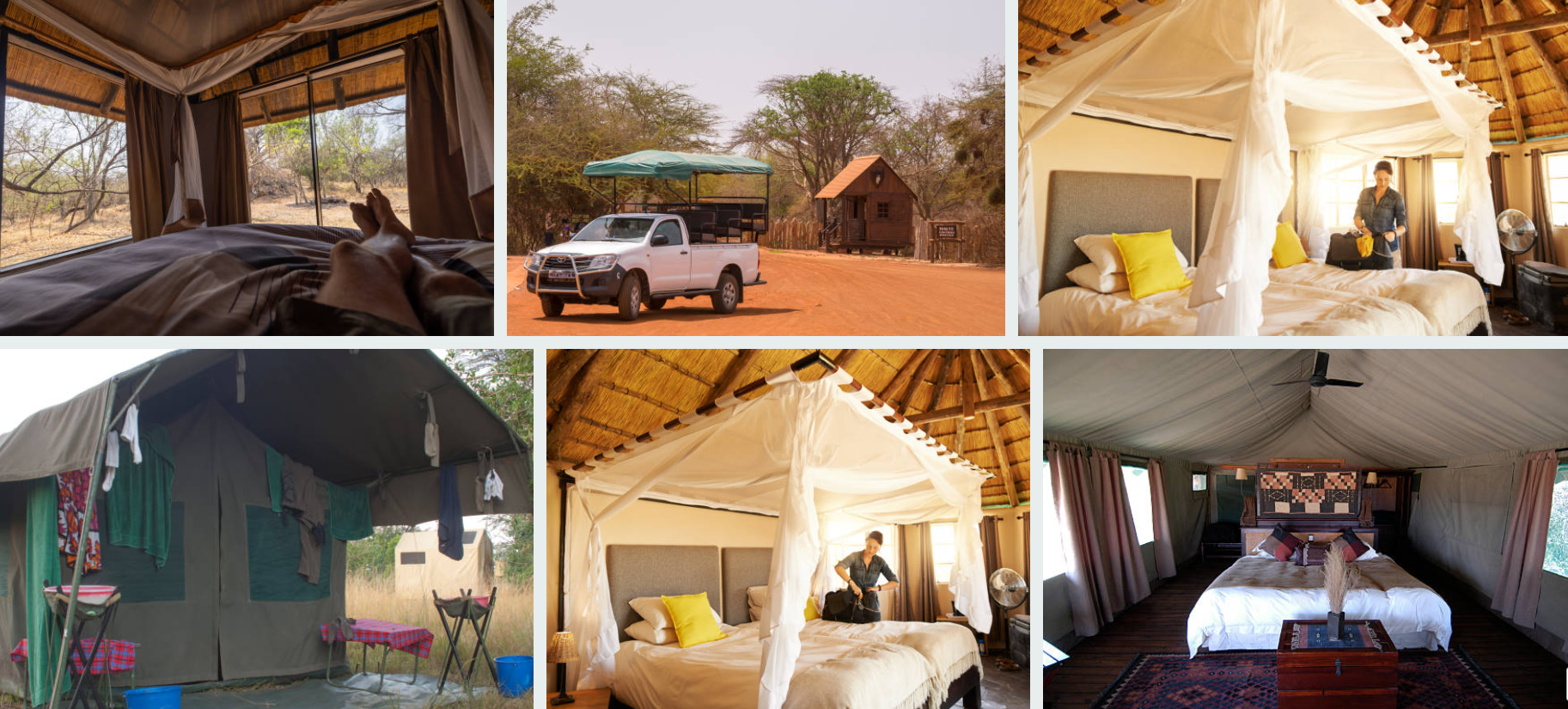Mobile vs. Permanent Safari Camps: Understanding the Key Differences
Mobile vs Permanent Safaris, Going on a safari is a dream for many travelers, offering an immersive experience in the heart of nature. However, choosing the right type of accommodation can significantly impact your adventure. Two popular options are mobile safari camps and permanent safari camps, each offering distinct advantages depending on your travel style, budget, and preferences.
In this comprehensive guide, we’ll explore the differences between mobile and permanent safari camps, covering aspects such as location, comfort, environmental impact, cost, and overall experience. By the end, you’ll have a clear understanding of which option best suits your safari needs.
1. Definition and Overview of Mobile vs Permanent Safaris
Mobile Safari Camps
Mobile safari camps, also known as tented camps or semi-permanent camps, are designed to be moved from one location to another. These camps are typically set up in remote areas, often following wildlife migration patterns. They provide a more rugged, authentic bush experience while still offering essential comforts.
Key Features:
-
Lightweight, collapsible tents
-
Minimal infrastructure
-
Often located in exclusive, wildlife-rich areas
-
Operate seasonally (usually during peak wildlife viewing months)
-
Smaller guest capacity (more intimate experience)
Permanent Safari Camps
Permanent safari camps, also called lodges or fixed camps, are established structures that remain in one location year-round. These camps offer more luxurious amenities and are often situated in or near national parks and private reserves.
Key Features:
-
Solid structures (tents on platforms or brick-and-mortar buildings)
-
More amenities (swimming pools, spas, Wi-Fi, etc.)
-
Consistent location with well-established game-viewing areas
-
Operate throughout the year
-
Larger guest capacity (though some high-end lodges remain exclusive)
2. Location and Accessibility for Mobile vs Permanent Safaris
Mobile Safari Camps: Remote and Dynamic
Mobile camps are often set up in private concessions or wildlife corridors that are inaccessible to larger lodges. Since they move with the wildlife, they provide front-row seats to animal migrations, such as the Great Wildebeest Migration in the Serengeti and Maasai Mara.
Pros:
-
Exclusive access to untouched wilderness
-
Closer to wildlife action due to flexible positioning
-
Fewer tourists (more private experience)
Cons:
-
May require longer transfers (sometimes by small aircraft or 4×4)
-
Limited accessibility during rainy seasons
Permanent Safari Camps: Convenient and Stable
Permanent camps are strategically placed in prime wildlife-viewing areas, often near waterholes or known animal territories. They are easier to access, with many located near airstrips or main roads.
Pros:
-
Easier to reach (better for families or those with mobility concerns)
-
Reliable game viewing due to established locations
-
More infrastructure (restaurants, bars, gift shops)
Cons:
-
Can be crowded during peak seasons
-
Less flexibility in following wildlife movements
3. Accommodation and Comfort for Mobile vs Permanent Safaris

Mobile Safari Camps: Rustic Yet Refined
Mobile camps prioritize simplicity and immersion in nature. Tents are spacious but basic, often featuring:
-
Comfortable beds with high-quality linens
-
En-suite bucket showers (heated on request)
-
Chemical or eco-friendly toilets
-
Solar-powered lighting
While they lack permanent structures, high-end mobile camps (like those in Botswana’s Okavango Delta) offer surprising luxury, including:
-
Private butler service
-
Gourmet bush dinners
-
Outdoor lounges with fire pits
Best For: Adventurous travelers who don’t mind roughing it slightly for an authentic experience.
Permanent Safari Camps: Luxury in the Wild
Permanent lodges provide hotel-like comforts in the bush, featuring:
-
Solid tents or cabins with wooden floors and furniture
-
Plumbed bathrooms (hot showers, flush toilets)
-
Air conditioning or fans
-
Wi-Fi (in some camps)
-
Swimming pools and spa facilities
Some ultra-luxury lodges (such as Singita or &Beyond properties) even offer:
-
Private plunge pools
-
Fine dining with international cuisine
-
Guided walks and cultural visits
Best For: Travelers who want comfort, convenience, and extra amenities.
4. Environmental Impact and Sustainability
Mobile Safari Camps: Low-Impact and Eco-Friendly
Since mobile camps are temporary, they have a minimal environmental footprint. Operators follow strict leave-no-trace policies, ensuring that the land remains undisturbed after the camp relocates.
Eco-Friendly Practices:
-
Solar power instead of generators
-
Composting toilets
-
Minimal water usage (bucket showers)
-
Lightweight, reusable materials
Permanent Safari Camps: Sustainable but More Fixed
While permanent lodges have a larger physical footprint, many are leaders in eco-tourism, using:
-
Solar and wind energy
-
Water recycling systems
-
Local building materials
-
Community employment and conservation programs
However, their fixed nature means they cannot relocate if wildlife patterns shift due to climate change.
5. Cost and Budget Considerations for Mobile vs Permanent Safaris
Mobile Safari Camps: Mid-Range to High-End
Prices vary, but mobile camps are often more affordable than ultra-luxury lodges, ranging from $300–$800 per night. However, high-end mobile safaris (like those in Botswana) can exceed $1,500 per night.
What’s Included?
-
All meals and drinks (sometimes including alcohol)
-
Game drives and guided walks
-
Park fees and transfers
Permanent Safari Camps: Budget to Ultra-Luxury
Permanent camps range from $200–$2,000+ per night, depending on exclusivity.
Budget Options:
-
Basic lodges in public parks (e.g., Kenya’s Maasai Mara)
-
Self-catering options available
Luxury Options:
-
All-inclusive packages with premium services
-
Private guides and helicopter tours
6. Wildlife Experience and Game Viewing in Mobile vs Permanent Safaris
Mobile Safari Camps: Up-Close and Exclusive
-
Follow migratory herds (ideal for the Great Migration)
-
Fewer vehicles at sightings (private concessions)
-
Night drives and off-roading often allowed
Permanent Safari Camps: Reliable but Less Flexible
-
Prime locations near year-round wildlife hotspots
-
More structured game drives (sometimes crowded in public parks)
-
Some lodges offer specialized guides (birding, tracking)
7. Best For Whom?
| Feature | Mobile Safari Camps | Permanent Safari Camps |
|---|---|---|
| Adventure Level | High (rustic, remote) | Moderate (more comfort) |
| Wildlife Access | Excellent (flexible) | Great (fixed locations) |
| Luxury Level | Mid to High | Budget to Ultra-Luxury |
| Crowds | Fewer people | Can be busy |
| Sustainability | Very eco-friendly | Varies (some very green) |
Choose a Mobile Safari Camp If You:
✔ Want an authentic, wild experience
✔ Don’t mind basic amenities
✔ Prefer exclusive wildlife viewing
✔ Are visiting during migration seasons
Choose a Permanent Safari Camp If You:
✔ Prefer comfort and convenience
✔ Travel with family or have mobility needs
✔ Want consistent game viewing
✔ Enjoy extra amenities (spa, pool, Wi-Fi)
Which One of Mobile vs Permanent Safaris is Right for You?
Both mobile and permanent safari camps offer incredible experiences, but the best choice depends on your priorities:
-
For adventure and exclusivity → Mobile Camp
-
For comfort and reliability → Permanent Lodge
Many travelers opt for a combination—spending a few nights in a mobile camp for an immersive experience and then relaxing at a luxury lodge.
Top Recommendations:
-
Best Mobile Camps: Serengeti Under Canvas (Tanzania), Zarafa Camp (Botswana)
-
Best Permanent Lodges: Singita Grumeti (Tanzania), Mombo Camp (Botswana)
Whichever you choose, a well-planned safari will be an unforgettable journey into the wild. Happy exploring!









